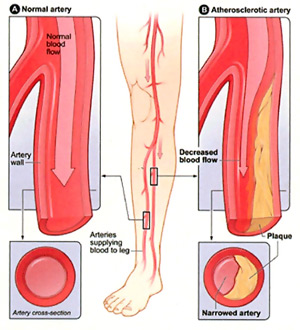Ankial-Brachial Index Testing
The ankle-brachial index test is done to check for Peripheral Artery Disease (PAD), a condition in which the arteries in your legs or arms are narrowed.
The ankle-brachial index test is done to check for Peripheral Artery Disease (PAD), a condition in which the arteries in your legs or arms are narrowed. You should consider this test if you are age 50 or older and have risk factors including Diabetes, Overweight, High blood pressure and/or High cholesterol.
 The Ankle Brachial pressure Index (ABPI), also known as ABI, is the blood pressure in the lower legs divided by the blood pressure in the arms. With this test, our doctors can identify the potential for blocked arteries (peripheral vascular disease) or PAD.
The Ankle Brachial pressure Index (ABPI), also known as ABI, is the blood pressure in the lower legs divided by the blood pressure in the arms. With this test, our doctors can identify the potential for blocked arteries (peripheral vascular disease) or PAD.
Hardened arteries (PAD) is caused by fatty deposits that build up in the artery walls and reduce blood flow. This disease (among other symptoms) can cause:
- Painful cramping in the hip, thigh or calf muscle.
- Leg numbness.
- Sores on the toes, feet or legs.
- A change in the color of the legs.
- No pulse or a weak pulse in your legs or feet.
If PAD progresses, pain may occur when lying down or at rest. If leg pain, numbness, decreased pulse in legs, diabetes, obesity or other symptoms occur, please contact us to make an appointment.
We will use a regular blood pressure cuff and a special ultrasound device to evaluate blood pressure and flow. Identifying PAD using tests like ABY enables doctors to properly diagnose and treat a patient’s symptoms. As with most diseases, early and accurate discovery allows you to receive proper treatment and make appropriate lifestyle changes.
Please notify your doctor if you have any of the following risk factors:
- You are over 70 years old.
- Over age 50 and have a history of diabetes or smoking.
- Under age 50 but have diabetes and other peripheral artery disease risk factors such as obesity, high blood pressure, hair loss in legs, palpable decreased pulse in legs or numbness in legs.
